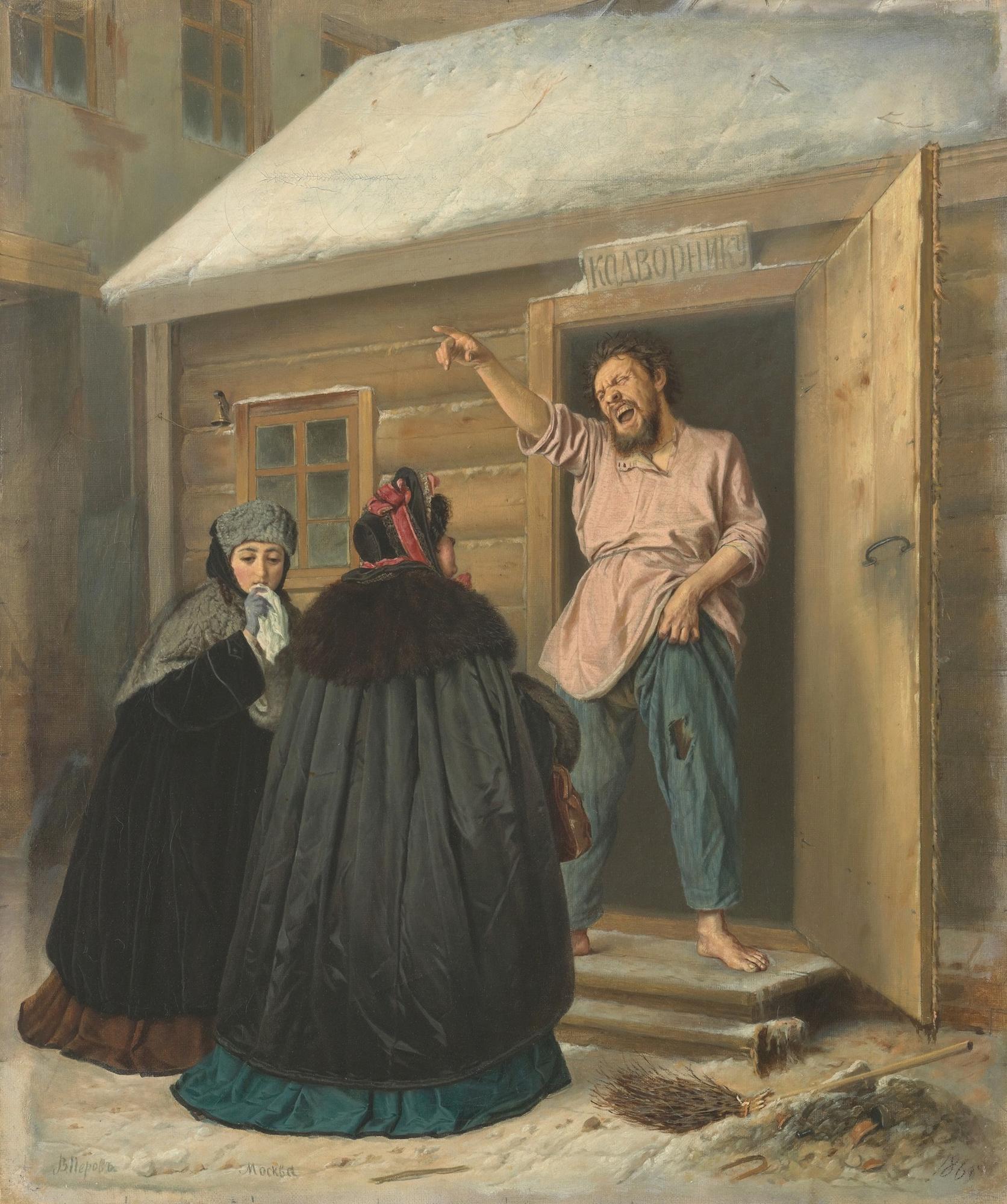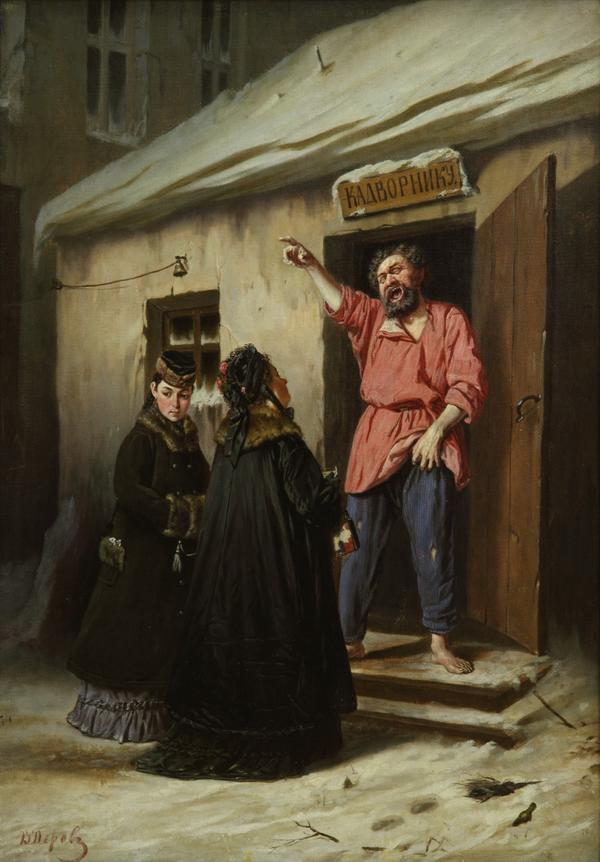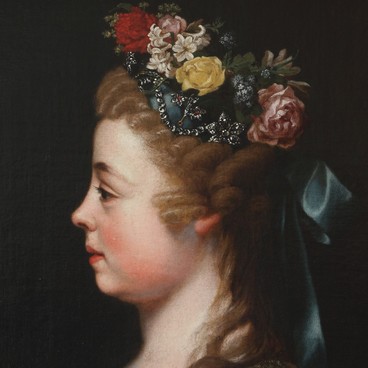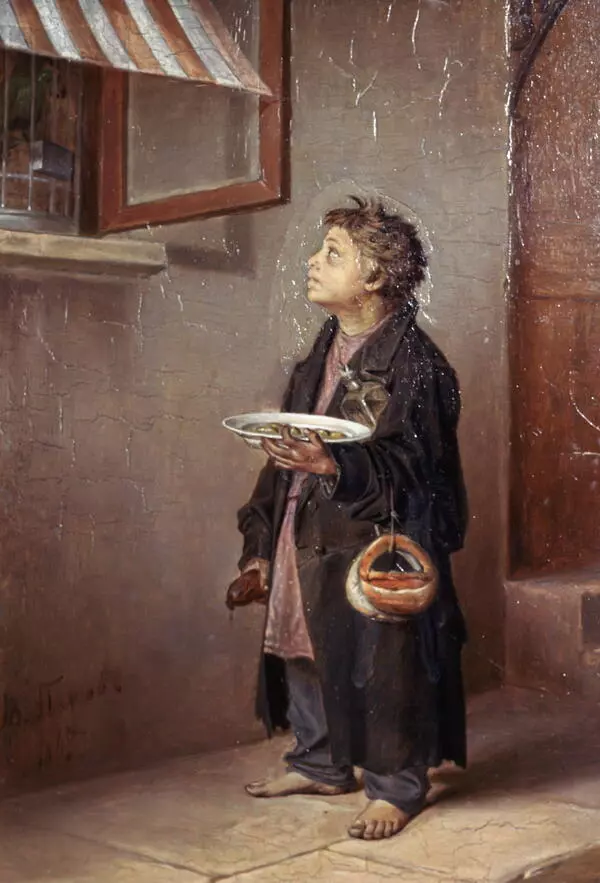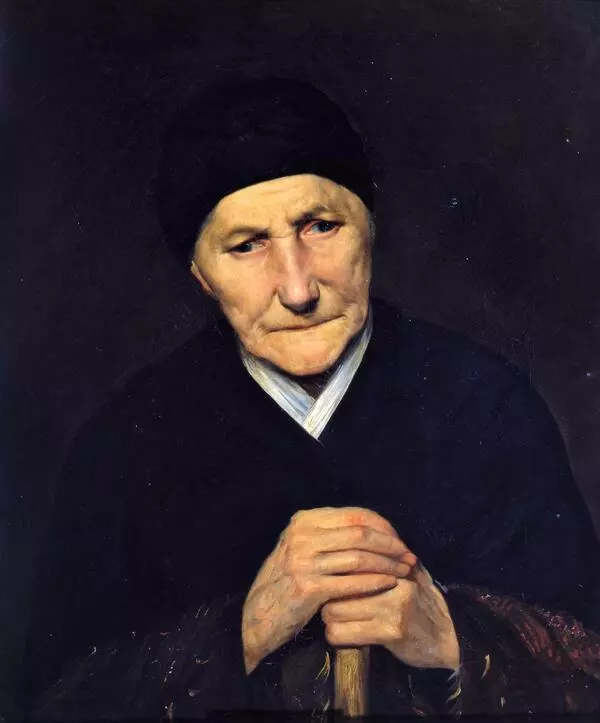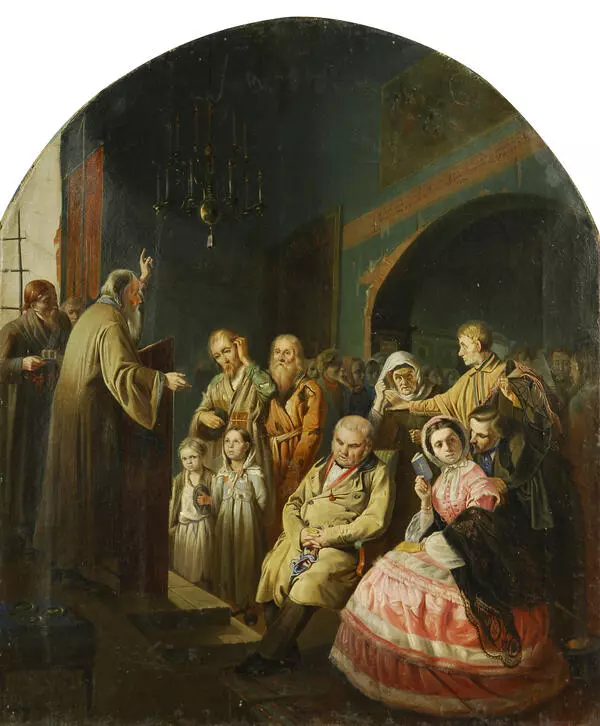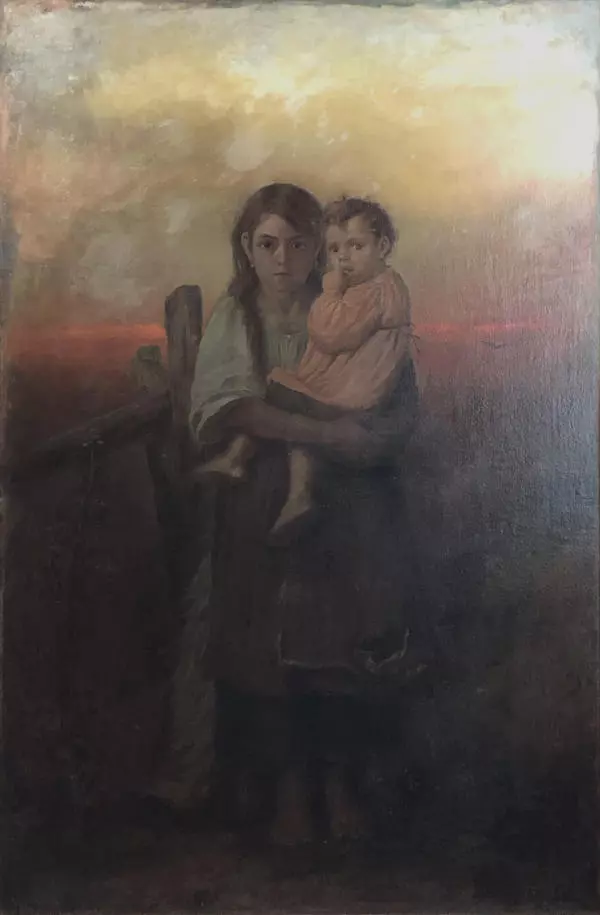Vasily Perov painted ‘Yard Keeper Giving an Apartment to a Fine Lady’ in 1878. This painting repeated the subject of the painting by the same name created in 1864. The noble ladies who went broke after the abolition of serfdom are looking for a cheap apartment. They are met by a tipsy unkempt yard keeper with disordered hair. He is making fun of the embarrassed women and points to ‘their place’ with a derogatory gesture.
The man’s hand is pointing upwards. The scene is apparently set in the yard of a tenement building — such building were constructed for renting apartments. In Tzarist Russia these buildings were designed under a certain manner. The first floor house shops and offices. The second and third floor with spacious apartments of 10-15 rooms were occupied by rich people. The fourth floor was for intelligentsia. And the fifth floor was intended for the poor: students and office juniors rented there small apartments with low ceilings. It is the top floor that the yard keeper is pointing to the fine ladies.
The artist placed the character higher on the steps for a reason. The older woman has to look up to speak to him. Her daughter, not used to rudeness and impertinence, has turned her head away. One can see that the young lady is ashamed — not for herself, but for the man, his rude manners and loosely hanging pants. The woman’s face expresses shock, half-hearted submission to the circumstances and the anguish experienced at that time by the nobility, not accustomed to a harsh life. Similar cases of impoverishment started to occur more frequently following the economic reforms of Alexander II.
The sign over the man’s head “tayard keeper” only emphasizes his illiteracy. Building owners often sent new renters “to yard keeper” — in those times, the position presupposed taking care of the yard as a whole rather than cleaning the area. Apparently the man wrote down the phrase “to yard keeper” just the way he heard it.
The man’s hand is pointing upwards. The scene is apparently set in the yard of a tenement building — such building were constructed for renting apartments. In Tzarist Russia these buildings were designed under a certain manner. The first floor house shops and offices. The second and third floor with spacious apartments of 10-15 rooms were occupied by rich people. The fourth floor was for intelligentsia. And the fifth floor was intended for the poor: students and office juniors rented there small apartments with low ceilings. It is the top floor that the yard keeper is pointing to the fine ladies.
The artist placed the character higher on the steps for a reason. The older woman has to look up to speak to him. Her daughter, not used to rudeness and impertinence, has turned her head away. One can see that the young lady is ashamed — not for herself, but for the man, his rude manners and loosely hanging pants. The woman’s face expresses shock, half-hearted submission to the circumstances and the anguish experienced at that time by the nobility, not accustomed to a harsh life. Similar cases of impoverishment started to occur more frequently following the economic reforms of Alexander II.
The sign over the man’s head “tayard keeper” only emphasizes his illiteracy. Building owners often sent new renters “to yard keeper” — in those times, the position presupposed taking care of the yard as a whole rather than cleaning the area. Apparently the man wrote down the phrase “to yard keeper” just the way he heard it.

